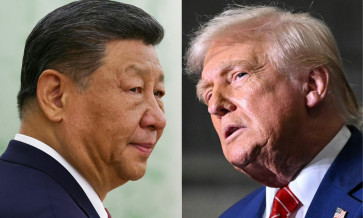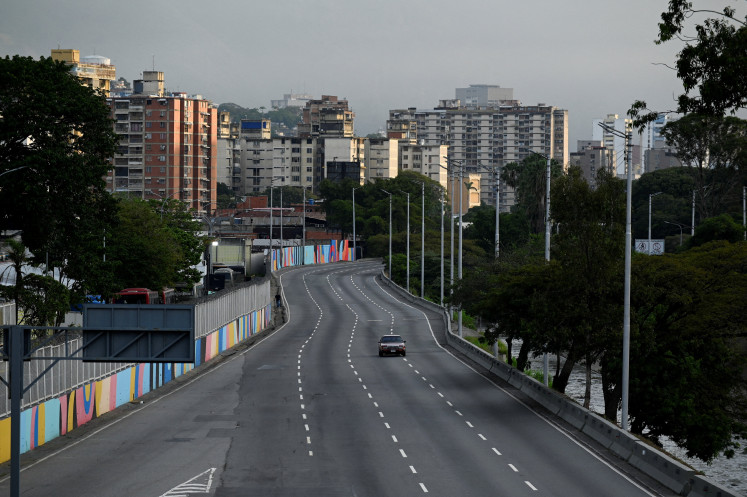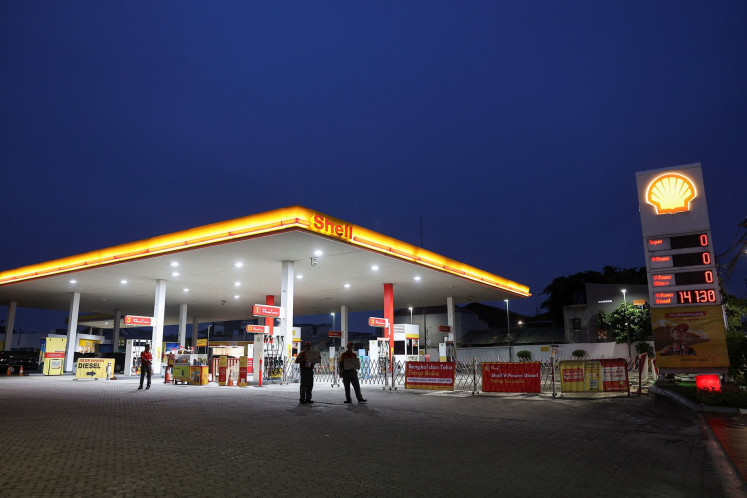Popular Reads
Top Results
Can't find what you're looking for?
View all search resultsPopular Reads
Top Results
Can't find what you're looking for?
View all search resultsThe battle to defend military history
Perhaps because most of them were built during the colonial era, they have never really been regarded as part of our history
Change text size
Gift Premium Articles
to Anyone
Perhaps because most of them were built during the colonial era, they have never really been regarded as part of our history.
For thousands of years, humans have been building fortifications, as military constructions designed for defense during war, in a variety of complex designs.
Although many of the fortifications in Indonesia were built before colonialism, a great deal more were built during it, meaning they were neglected after the nation won its independence.
Now, a new effort to preserve these historical defense structures is underway, with researchers assessing traditional and colonial fortifications around the country in a bid to preserve the structures and raise community awareness about their historical importance.
The project, run by the Center for Architecture Documentation (PDA) and its Dutch counterpart Passchier Architects and Cultural (PAC), under the auspices of the HGIS Cultural Funding of the Dutch Ministry of Foreign Affairs and the Indonesian Culture and Tourism Ministry, began two years ago.
PAC is responsible for reviewing archives in the Netherlands, and the PDA is responsible for field surveys and reviewing archives in Indonesia.
“Fortifications should not be regarded only as a colonial inheritance,” executive director of the Indonesian Heritage Trust (BPPI) Catrini Kobontubuh told The Jakarta Post recently. “They are part of our history. Preserving them means we have preserved a source of knowledge for future generations.”
Catrini said the BPPI had been fully supporting the project since its launch in June 2007 because it was a rare initiative for Indonesia.
“Among the more than 200 forts registered at the Culture and Tourism Ministry, only seven have legal status as heritage buildings,” said Catrini.
The goal of the project is to produce a comprehensive database of fortifications to support government policy in the preservation of these heritage structures.
Archival research and field surveys have been conducted in various parts of the country to identify the types of fortification, their existing condition, common damage and development opportunities or risks, given the forts’ individual characteristics.
“We know that we have many historical buildings such as forts, but we don’t really know where they are or what condition they are in. Many have been neglected,” said PDA executive director Nadia Purwestry.
The research began with an initial list of 279 forts provided by the Culture and Tourism Ministry; of these, only 16 have been restored.
Information since gathered about these forts includes architectural facts and description, photos and videos detailing their current condition, data on the surrounding environment, GPS data on their position and accessibility, and information from local people.
The project is designed in three stages, each running for 12 months to review a different part of the country.
The first stage, from July 2007 to June 2008, identified fortifications in Maluku, North Maluku, West Papua and Papua.
The second stage, to identify fortifications in Java and Sumatra, began in July 2008 and will finish in June 2009. The third stage, from June 2009 to July 2010, will identify fortifications in Kalimantan, Sulawesi, Nusa Tenggara and Bali.
Top priority are fortifications from the colonial era, such as stockades, blockhouses, land batteries, small forts, redoubts, hybrid fortifications or renaissance fortifications, and city walls.
Next are bunkers and forts from during World War II, followed by prehistoric fortifications, stockades (fences) and traditional fortifications.
The team reports surprising findings from the first stage, not least that there were more forts than the number documented by the directorate general of history and archaeology at the ministry.
For the eastern part of Indonesia, the team has found 141 fortifications. In Java and Sumatra alone, the team has already identified 180 fortifications.
More than 70 percent or 104 fortifications identified in eastern Indonesia are colonial structures built around the 17th century; 14 are traditional fortifications and 23 are defense structures for World War II.
Among the colonial fortifications in a relatively good condition are the 17th-century Nieuw Victoria Castle in Ambon, Orange Castle in Ternate, Star Fort Belgica in Neira island in Banda Islands. These three are regarded as the main Dutch fortresses.
Others are the Amsterdam blockhouse built in Hila in Ambon in 1637; the San Jao or San Pedro redoubt built in Ternate in 1530, which is now known as Kota Janji; Tolukko castle, built by Portuguese general Francisco Serao in 1540; and the Batavia land battery and Colombo land battery built around the end of 18th century by then governor Francois Boekholtz at Gunung Api island.
“There are still many unidentified,” said Nadia Purwestry, adding that less historical information was available for fortifications in the western part of Indonesia than for those in the east.
Most of the fortifications in the eastern parts of Indonesia have been left to fall into poor condition. Only 23 of the 104 colonial fortifications are in a relatively complete state, 20 are in ruins, 23 are mere remnants, eight have been destroyed; 30 have not yet been assessed.
“Fortifications never come to our attention,” said Sudarmadji Damais, former head of the Jakarta History Museum. “Many of them, especially traditional fortifications, have disappeared, so this survey would be perfect if it was combined with an archaeological survey.”
He said many traditional fortifications had disappeared quickly because they were not made from stone or cement like colonial fortifications.
Of the 14 traditional fortifications identified, only two are in a relatively complete condition, one is in ruins, four are mere remnants, three destroyed; the other four have not been surveyed.
One of the traditional fortifications identified is Kapahaha hill fort built in 1646 by the people of Hitu in Ambon as a defense against the Dutch. Although it has fallen into a state of ruin, it can still be identified.
Most of the 23 World War II fortifications, mostly Japanese bunkers, are in good condition, with only three in ruins. However, very little information about them is available.
“We are relying on only two books about Japanese defense during the second World War,” said Purwestry.
Among these 20th-century fortifications are Japanese bunkers in Passo and Air Salobar, Ambon, military pillboxes along the coast line of Ambon beaches and Buru Island, as well as Gen. Douglas MacArthur’s station in Sentani, Papua.
The researchers hope that the comprehensive database being compiled will prove valuable for all conservation efforts and for finding ways to use the structures in the future.
With its detailed information on the sociocultural and economic aspects of the forts and their surrounding areas, the survey is also intended to stimulate public awareness, engaging local communities in conservation efforts.
At the end of the documentation process, a small exhibition and public seminar will be held in combination with the publication of a catalogue book. The findings will also be published on the Internet.
“This is only an initial step for preservation,” said Purwestry. “We hope that the result of this survey will become the basis for government decisions on preserving these historic structures.”










